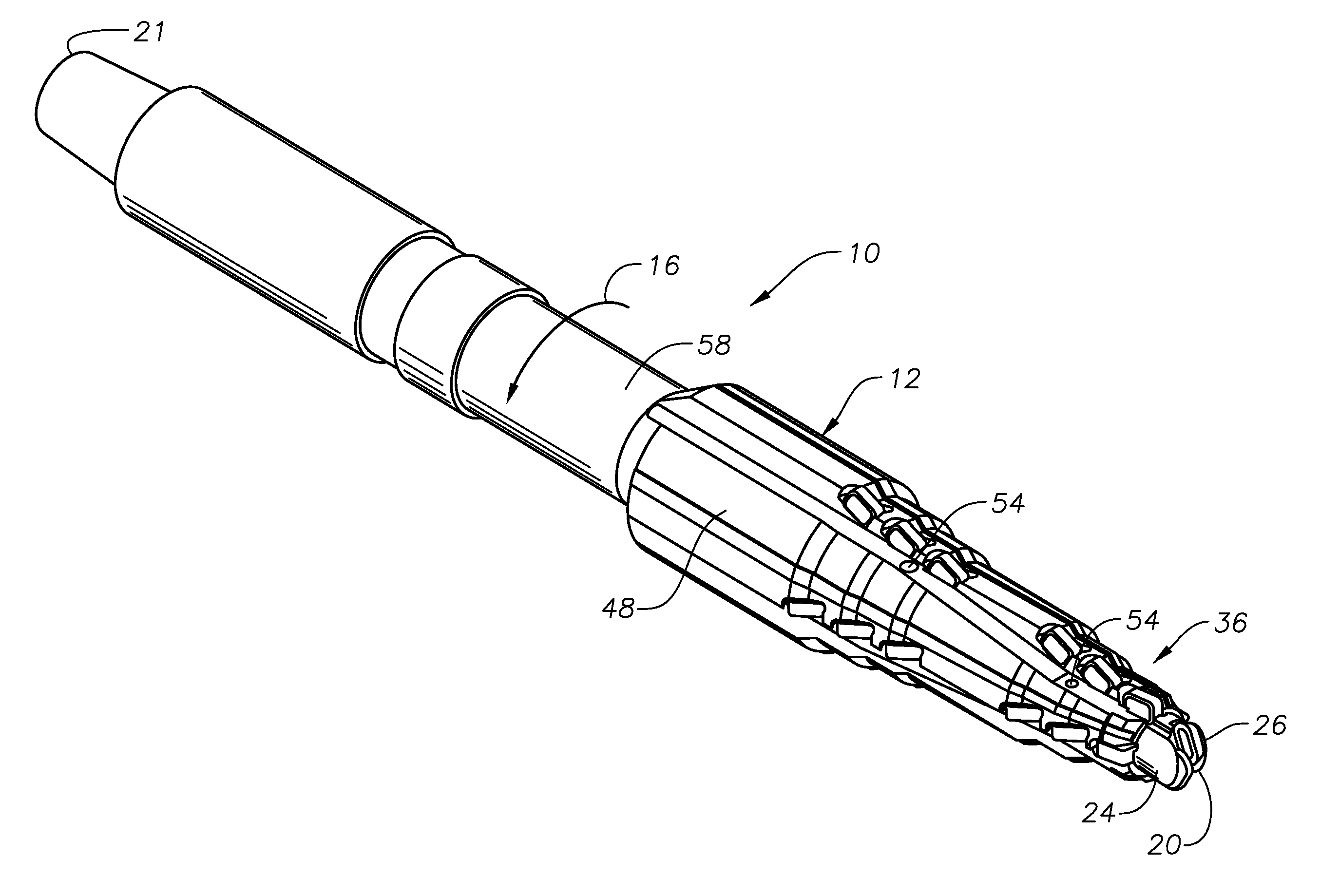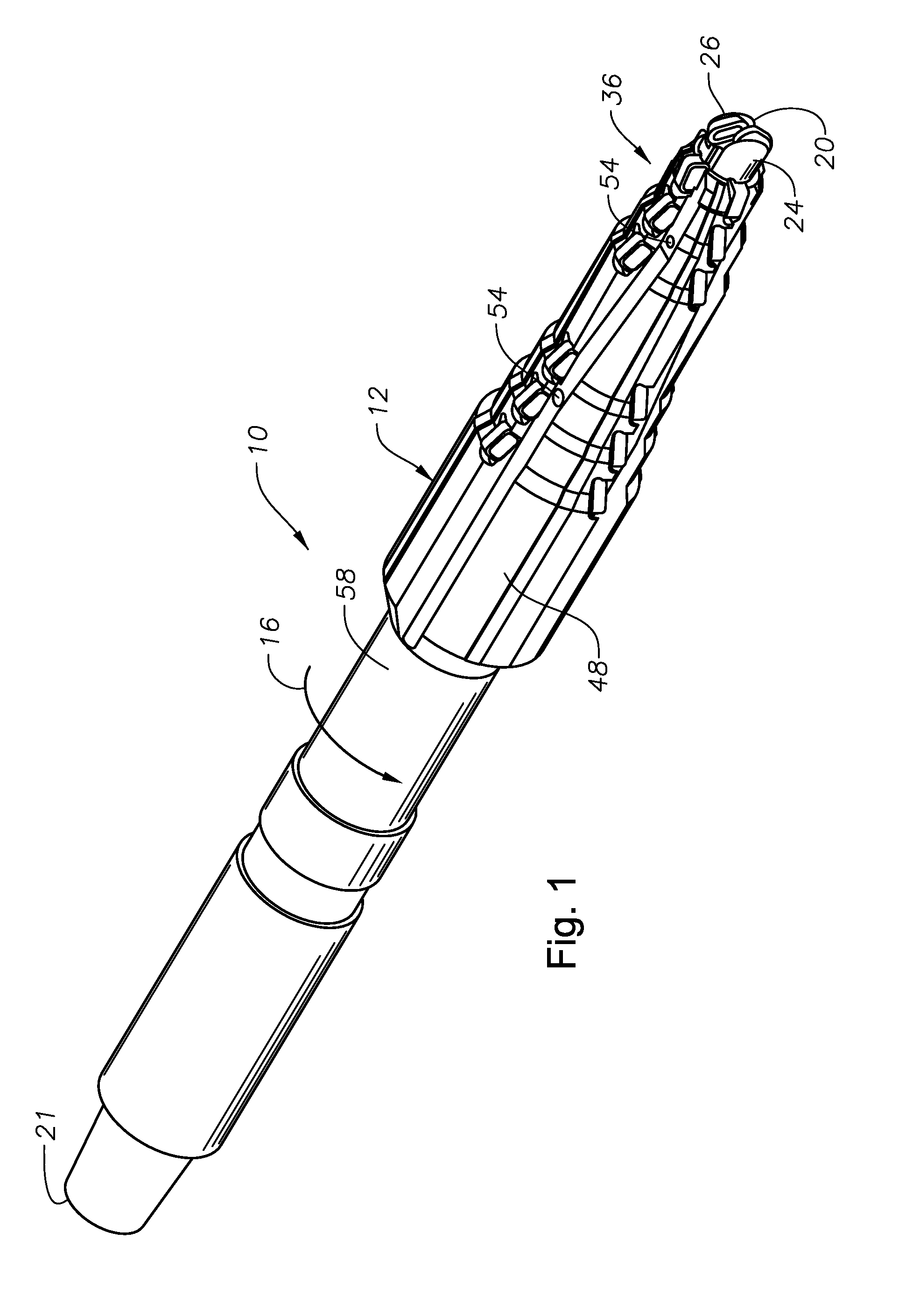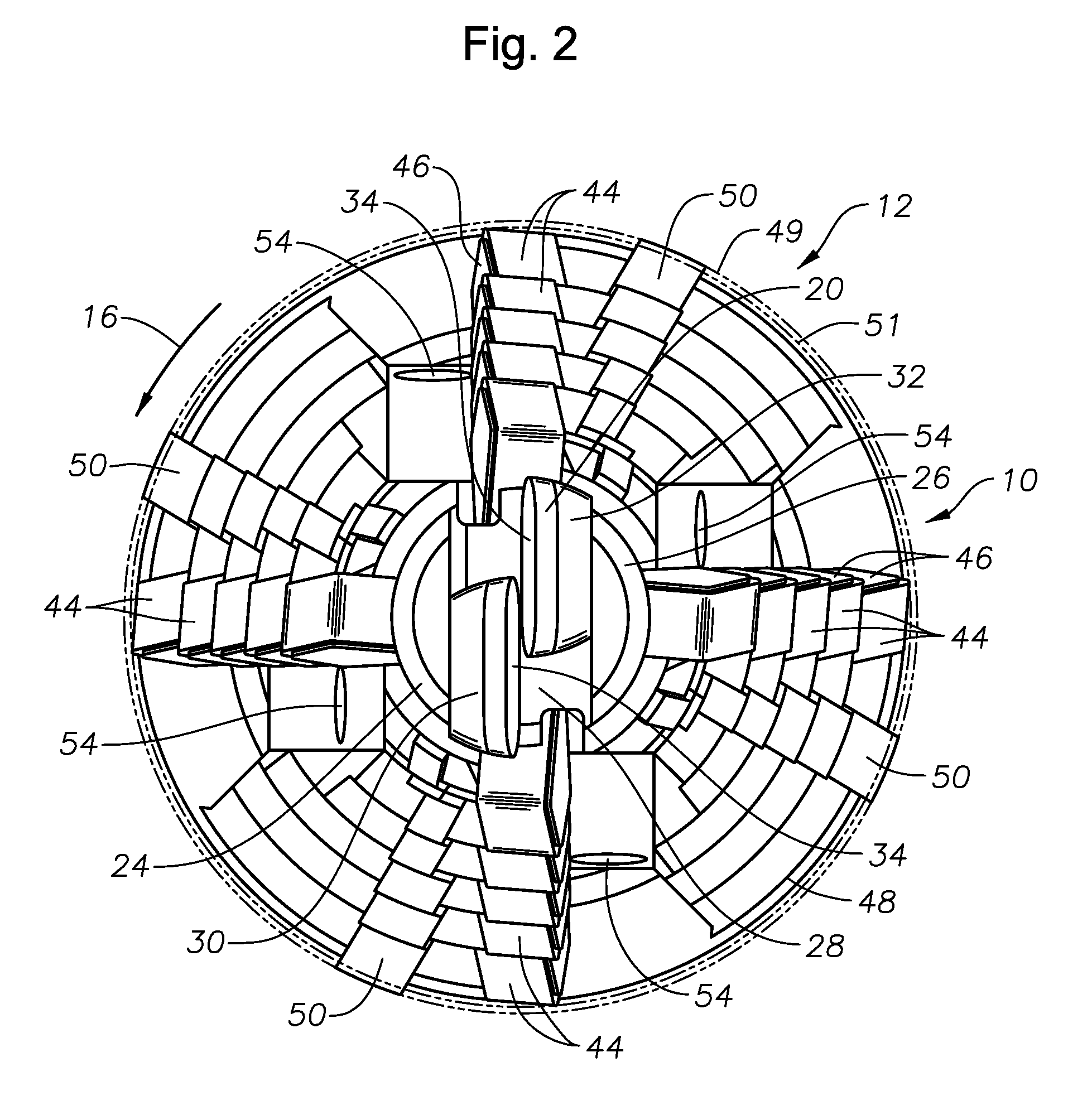Milling tool for establishing openings in wellbore obstructions
a technology for obstructions and milling tools, applied in the direction of drilling pipes, drilling/well accessories, sealing/packing, etc., can solve the problems of unique and complex design challenges, and achieve the effects of avoiding severe vibration, and reducing the risk of damag
- Summary
- Abstract
- Description
- Claims
- Application Information
AI Technical Summary
Benefits of technology
Problems solved by technology
Method used
Image
Examples
Embodiment Construction
[0031]Referring first to FIGS. 1-8, there is depicted an exemplary milling tool 10 that has been constructed in accordance with the present invention. The milling tool 10 includes a milling tool body 12 that has a shaft / fishing neck. In the event that coiled tubing is used for running the milling tool 10, a mud motor of a type known in the art, is positioned in between the coiled tubing and the milling tool 10 in order to cause the milling tool 10 to rotate as fluid is flowed down through the mud motor. During operation in a wellbore, the milling tool 10 is rotated in the direction indicated by arrow 16.
[0032]The milling tool body 12 has a distal end 20 and a proximal end 21. The distal end 20 of the milling tool body 12 presents a nose cutting portion, generally indicated at 22. In a preferred embodiment, the nose cutting portion 22 includes a pair of cutting prongs 24, 26, which protrude axially in the distal direction from cylindrical base 27. Each cutting prong 24, 26 has a gene...
PUM
 Login to View More
Login to View More Abstract
Description
Claims
Application Information
 Login to View More
Login to View More - R&D
- Intellectual Property
- Life Sciences
- Materials
- Tech Scout
- Unparalleled Data Quality
- Higher Quality Content
- 60% Fewer Hallucinations
Browse by: Latest US Patents, China's latest patents, Technical Efficacy Thesaurus, Application Domain, Technology Topic, Popular Technical Reports.
© 2025 PatSnap. All rights reserved.Legal|Privacy policy|Modern Slavery Act Transparency Statement|Sitemap|About US| Contact US: help@patsnap.com



